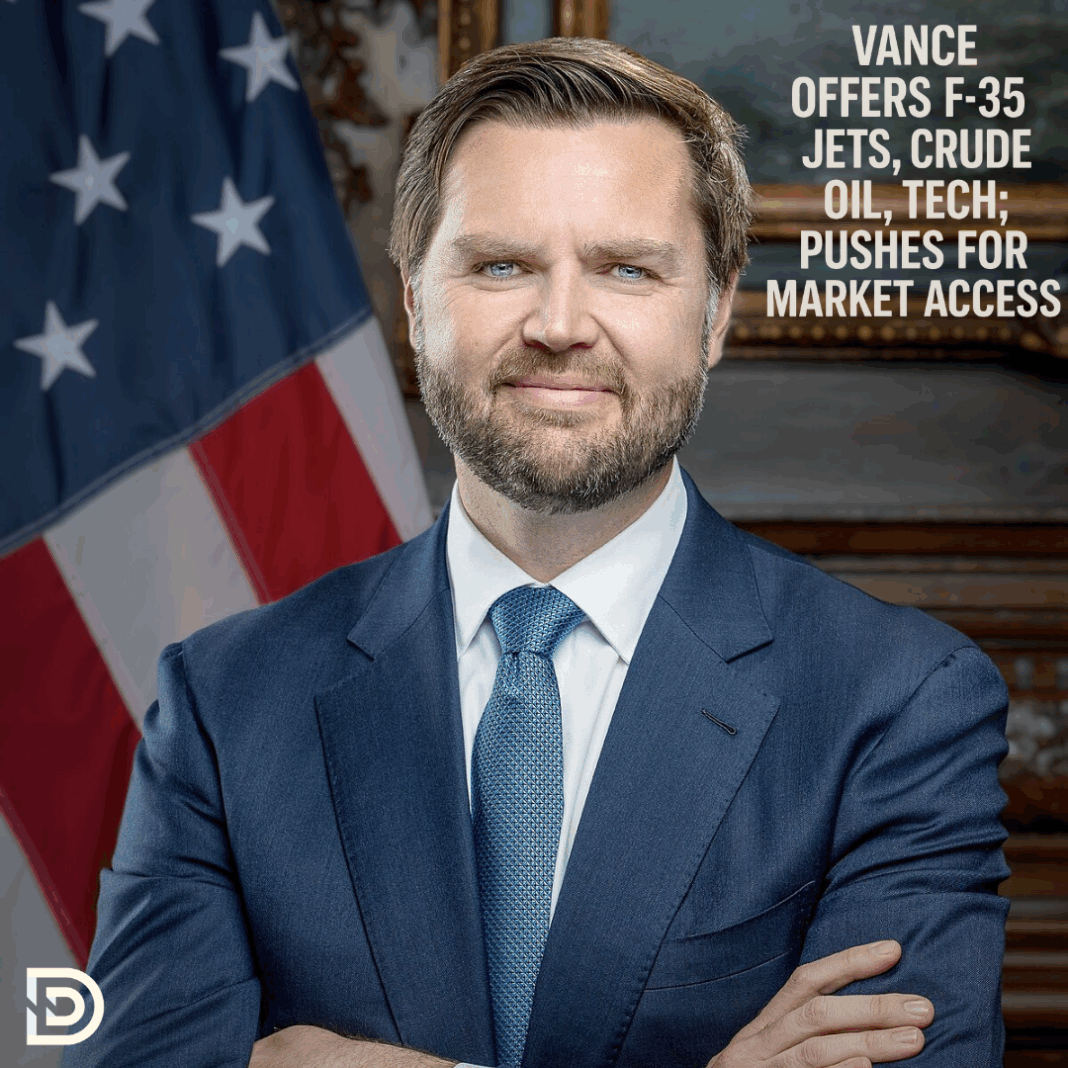During his official visit to India, US Vice President JD Vance made a strong pitch to deepen defense ties between the two countries. He formally offered India the F-35 fighter jets, which are among the most advanced in the world. These jets are known for their speed, stealth technology, and powerful weapons systems. The offer signals a big move in military cooperation.
Big Defense Offers and Military Partnership Plans
Plans to co-produce important defense weapons with India were also discussed by JD Vance. This includes advanced missiles like the Javelin, which are used to destroy enemy tanks, and Stryker combat vehicles, which help soldiers move quickly and safely during battles. These items would not just be imported but built together in India, helping the local industry and generating jobs.
He added that both countries will work together to produce many other types of military tools and equipment. This is meant to help both nations stay safe and prepare for possible threats. At the same time, JD Vance encouraged India to buy more defense equipment from the US. This comes as India continues to rely on Russia, France, and Israel as top arms suppliers. The US now wants to become one of India’s top defense partners.
Energy and Technology: Sharing Resources and New Ideas
JD Vance also focused on energy cooperation during his trip. He proposed expanding U.S. natural gas and crude oil exports to India. These fuels are used to power factories, homes, and vehicles. The US also expressed readiness to help India explore and use its own energy sources, including offshore gas and critical minerals like lithium, which are important for batteries and electronics.
KAI Seeks Strategic Edge as KF-21 Challenges U.S. F-35 Amid Diplomatic Rift
He applauded India’s national budget proposal to change the country’s civil nuclear liability legislation. These laws have so far blocked American companies from exporting nuclear energy systems to India. JD Vance said this change would allow US firms to bring in small modular reactors and also help in building larger nuclear plants in the country.
JD Vance stated that co-producing energy solutions would give both countries an edge over unfair competitors in international markets. He emphasized that working together in the energy sector would reduce costs and improve energy security for both nations.
In the field of advanced technology, JD Vance announced new plans for cooperation. These include data centres that store digital information, undersea cables that provide internet access, and pharmaceutical development to support the healthcare sector. He mentioned that these areas are not only important for economic growth but also for national safety. The US wants to work closely with India in sharing skills, tools, and investment in these high-tech areas.
From China’s Heartland to Guam in Minutes: DF-27’s Reach Stuns U.S. Command
Fair Trade and Access to Markets: Calls for Balance
On the topic of trade, JD Vance shared that the US and India had reached an agreement on the terms of reference for a bilateral trade deal. This means both sides are ready to start formal talks to make trade easier and more beneficial for each other.
But JD Vance noted that there are still a lot of non-tariff obstacles for US companies doing business in India. These are rules and procedures—not related to import taxes—that make it harder for American companies to operate. He asked India to reduce these hurdles to create a fairer business environment. He claimed that this would make it easier for US businesses to enter India’s sizable and expanding market.
As an example, JD Vance talked about ethanol blending, where the US could provide clean fuel and the technology needed to mix it with traditional fuels. This would not only help the environment but also strengthen trade ties.
Deadly US F-35 Deployment Escalates Conflict with Houthis in the Middle East
JD Vance emphasized that the US is looking for partnerships based on fairness, openness, and shared national interest. He said the two countries are aligned in both economic goals and national security concerns.
Speaking at an event in Jaipur, JD Vance criticized past US administrations for using a “preaching” tone when dealing with India. He made it clear that the current approach is different. “We come to you as partners.”We’re not here to tell you to do things a certain way,” he stated.
Both nations desire a stable and equitable international trading system, JD Vance continued. He made it clear that the US respects India’s decisions and is here to build equal partnerships, not to lecture or impose ideas.
From April 21 to 24, JD Vance, his wife, and their three kids are traveling to India for four days. His meetings and public speeches focused on defense, energy, technology, and trade. From offering F-35 jets and energy supplies to seeking more market access, JD Vance’s visit marked a significant moment in US-India relations.

